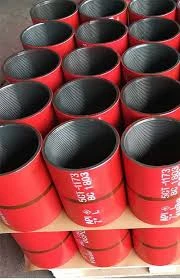- Afrikaans
- Albanian
- Amharic
- Arabic
- Armenian
- Azerbaijani
- Basque
- Belarusian
- Bengali
- Bosnian
- Bulgarian
- Catalan
- Cebuano
- Corsican
- Croatian
- Czech
- Danish
- Dutch
- English
- Esperanto
- Estonian
- Finnish
- French
- Frisian
- Galician
- Georgian
- German
- Greek
- Gujarati
- Haitian Creole
- hausa
- hawaiian
- Hebrew
- Hindi
- Miao
- Hungarian
- Icelandic
- igbo
- Indonesian
- irish
- Italian
- Japanese
- Javanese
- Kannada
- kazakh
- Khmer
- Rwandese
- Korean
- Kurdish
- Kyrgyz
- Lao
- Latin
- Latvian
- Lithuanian
- Luxembourgish
- Macedonian
- Malgashi
- Malay
- Malayalam
- Maltese
- Maori
- Marathi
- Mongolian
- Myanmar
- Nepali
- Norwegian
- Norwegian
- Occitan
- Pashto
- Persian
- Polish
- Portuguese
- Punjabi
- Romanian
- Russian
- Samoan
- Scottish Gaelic
- Serbian
- Sesotho
- Shona
- Sindhi
- Sinhala
- Slovak
- Slovenian
- Somali
- Spanish
- Sundanese
- Swahili
- Swedish
- Tagalog
- Tajik
- Tamil
- Tatar
- Telugu
- Thai
- Turkish
- Turkmen
- Ukrainian
- Urdu
- Uighur
- Uzbek
- Vietnamese
- Welsh
- Bantu
- Yiddish
- Yoruba
- Zulu
Understanding Tubing Collars and Their Importance in Oil and Gas Operations
Understanding Tubing Collars An Essential Component in Oil and Gas Drilling
Tubing collars play a critical role in the oil and gas drilling industry, serving as essential connectors in the completion phase of a well. These components are designed to facilitate the secure attachment and integrity of production tubing strings that run deep into the earth, accessing valuable hydrocarbon resources. Understanding the design, function, and importance of tubing collars is vital for professionals in the field, as well as for those interested in the dynamics of drilling operations.
What are Tubing Collars?
Tubing collars, often referred to as tubing coupling devices, are specialized fittings used to join sections of tubulars within a wellbore. The primary function of these collars is to provide a strong and durable connection, ensuring the appropriate transmission of pressure and fluids between various sections of the production tubing. They are typically made of high-strength steel to withstand extreme downhole conditions, including temperature fluctuations, high-pressure environments, and corrosive substances.
Types of Tubing Collars
There are several types of tubing collars utilized in the oil and gas industry, each designed for specific applications and environments. Common types include
1. Standard Collars These are the most basic type and are used for general applications. They provide a reliable connection but may not offer the same level of pressure resistance as specialized designs.
2. Threaded Collars These collars feature threaded ends that allow for easy and secure connections. They are often used in high-pressure applications where a robust seal is critical.
3. Slip-on Collars Designed for quick installation and removal, slip-on collars are useful in applications where frequent adjustments to the tubing string are required.
4. Specialty Collars Some applications demand distinct features, such as enhanced sealing capabilities or resistance to specific corrosive agents. Specialty collars can be engineered to meet these needs.
Importance of Tubing Collars in Drilling Operations
tubing collar

The integrity of a well depends heavily on the quality and reliability of the tubing collars used. Any failure in this component can lead to severe operational issues, including leaks, loss of pressure, and even catastrophic blowouts. Properly designed and manufactured tubing collars ensure that the production process is safe and efficient.
Another essential aspect of tubing collars is their contribution to the overall efficiency of drilling. By enabling seamless connections between tubing sections, collars minimize the risk of downtime during operations. This efficiency directly translates to cost-effectiveness, as reduced downtime means more production and lower operational costs.
Best Practices for Tubing Collar Installation
To maximize the performance and longevity of tubing collars, several best practices should be followed during installation
1. Thorough Inspection Before installation, inspect collars for any signs of damage or corrosion. This step helps avoid issues that might compromise the integrity of the well.
2. Correct Torque Specifications Ensure that the collars are tightened to the manufacturer's specified torque settings. Over-torquing can lead to deformation, while under-torquing may result in leaks.
3. Use of Sealants In some cases, applying sealants may enhance the sealing capability of the collars, further preventing leaks.
4. Regular Maintenance Regular checks and maintenance of the tubing columns can identify potential issues early, helping to prevent failures.
Conclusion
In conclusion, tubing collars are a vital component in the oil and gas industry, crucial for ensuring the safety and efficiency of drilling operations. Their role in connecting tubing sections cannot be overstated, as they not only support the operational integrity of a well but also significantly contribute to the overall productivity of extraction processes. As drilling technologies advance, continued innovation in tubing collar design and materials will enhance their functionality and reliability in the demanding environments of oil and gas extraction. Understanding these components helps industry professionals optimize their operations, ensuring the sustainable and responsible extraction of fossil fuels.
-
Well Casing Extension Couplings – Applications and InstallationNewsJun.06,2025
-
Types of Crossover Subs in Drilling & CompletionNewsJun.06,2025
-
Key Features of High-Quality Tubing Pup JointsNewsJun.06,2025
-
Installation and Maintenance Tips for Steel Couplings for PipeNewsJun.06,2025
-
How to Select the Right Pup Joint for Oil & Gas OperationsNewsJun.06,2025
-
Applications of Stainless Steel Pipe CouplingsNewsJun.06,2025







